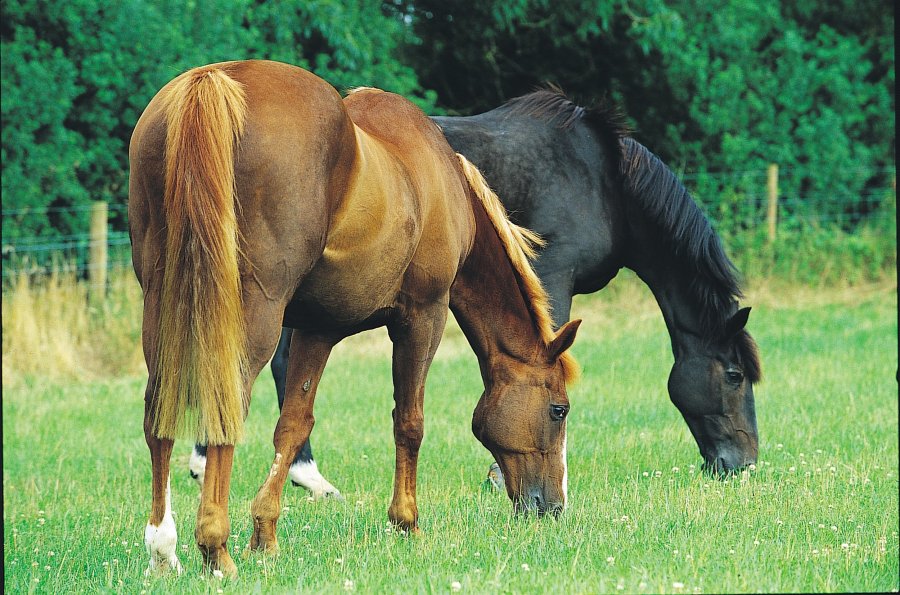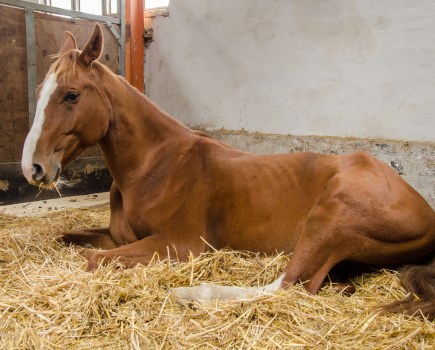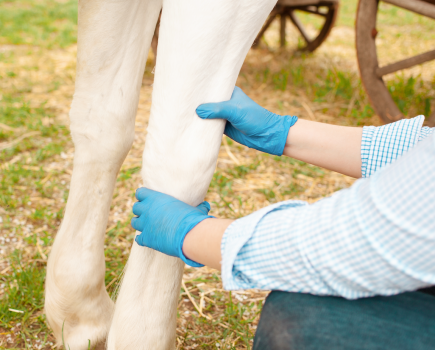The spring grass may be a welcome sight after months of winter mud but its high nutritional content can put a strain on your horse’s digestive system – and too much too fast could overload his body and lead to a potentially dangerous bout of gassy colic. Painful, damaging, and even fatal in some cases, the good news is that this type of colic is easily avoided, provided you understand the dangers and take steps to protect your horse’s gut.
Here Petplan vet of the year Gil Riley has all the advice you need to keep your horse’s digestive system on an even keel – and how to cope should the worst ever happen.
Beware sudden changes in diet
Remember those 10 golden rules of feeding we all learned in the Pony Club? Number one was ‘make any changes to your horse’s diet gradually’.
“The main cause of gassy colic is an overly rapid change in diet, most commonly the horse being put into a new paddock full of lush grass,” explains Gil.
“This is because gassy colic centres on the fact that the horse’s digestive system isn’t just about enzymes breaking down food, it’s about billions and billions of microbes in the large intestine, which help break down the plant fibre, or cellulose, found in grass. Cellulose is an extremely difficult structure to break down. Our guts wouldn’t be able to manage it, yet horses have to cope using a similar gastrointestinal set up to ours,” explains Gil.
“Whereas cattle, sheep and goats have a four-chambered stomach that mashes grass down and liquidates it as the animals regurgitate food repeatedly and ruminate, horses have a small stomach, small intestine, large intestine and back passage, and have to improvise to break down grass. Not being able to ruminate and vomit, they instead have developed a large intestine that’s basically a huge fermenting vat, packed with billions of microbes, and this in turn produces lots of gas.
“In a healthy horse, the delicate microbial population in the gut will be in balance, depending on what he’s regularly eating (ie, a diet of mainly hay or haylage) and how this food needs to be broken down. If the diet is suddenly changed, for instance your horse switches from being stabled and eating hay to being out and eating rich grass, the microbes can be caught out of step with the result that the food isn’t broken down properly. This can lead to an excess of gas production, which can quickly accumulate, causing problems.”
The horse has abut 30 metres of intestine and there are many sharp turns and hairpin bends to enable it to sit within the abdomen. If gas builds up in one area it struggles to pass through the loops of intestine, getting trapped and causing intense pain.
“Gassy colic is extremely painful and your horse will show typical colic signs – refusal to eat, obvious pain, kicking or biting at his flanks, etc,” says Gil.
“This pain is due to excess gas in the gut stretching and pressing on the gut wall, causing the pain and pressure receptors in the bowel wall to be activated. The symptoms can be dramatic, and mimic those found in spasmodic or impaction colic, so it’s your vet’s job to quickly ascertain which type it is.”









